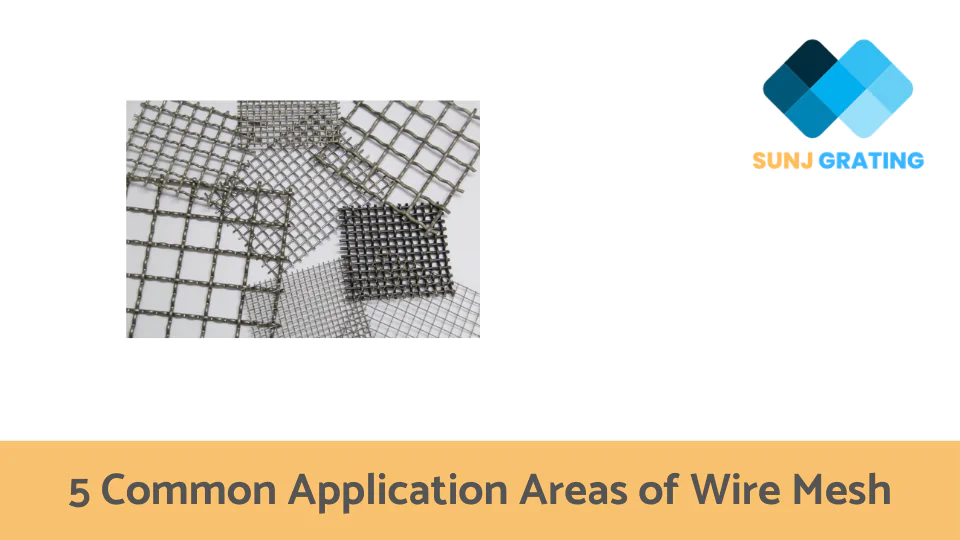Introduction
A variety of uses can be made with wire mesh because of its adaptability. Wire mesh is used in many commonplace items and constructions, from industrial filtration to beautiful home design. The top 5 uses for wire mesh will be discussed in this article, along with its use.
We’ll also dive into how wire mesh is used for filtration and separation purposes in a variety of industrial settings. Whether you’re looking for a durable and reliable material for your next project or simply want to learn more about wire mesh, this article is for you.
Wire mesh in different areas
A versatile material, wire mesh is used in many different applications. It is made of a grid of interwoven metal wires that are robust and lightweight and is utilized in building and other industrial applications. Because wire mesh is so sturdy and long-lasting, it’s the perfect material for tasks that need both.
1. Industrial Applications of Wire Mesh
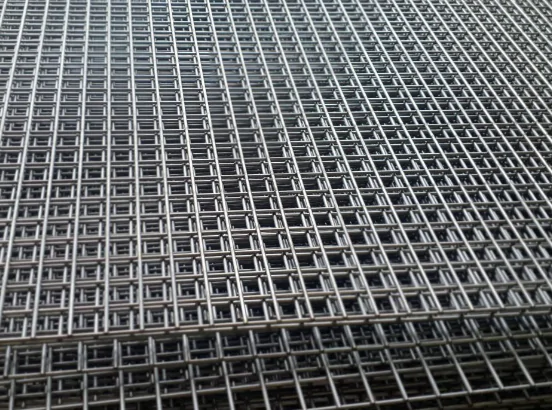
Filtering applications
Due to its effectiveness in capturing particles of a given size, wire mesh is frequently employed in filtering applications. It can be woven with various weaves, such as welded, knitted, or perforated, to provide different levels of filtration.
Reinforcement and support structures
Concrete reinforcement, soil stabilization, and retaining walls are just a few of the uses for wire mesh in support and reinforcement structures. By adding more reinforcement and support when employed in concrete, wire mesh contributes to the structure’s increased strength and stability.
Conveyor belt systems
Wire mesh in conveyor belt systems including in food processing, manufacturing, and even in the sorting of recyclable materials. It can be used for a variety of purposes, including conveying materials up steep inclines, providing support for fragile items, and providing more secure transport of items.
Industrial sieving and sorting applications
Wire mesh can be used in industrial sieving and sorting applications to separate particles of different sizes. For example, a mesh count of 10 will allow particles up to 0.98 inches in size to pass through, while a mesh count of 40 will allow particles up to 0.42 inches in size.
2. Agricultural Applications of Wire Mesh
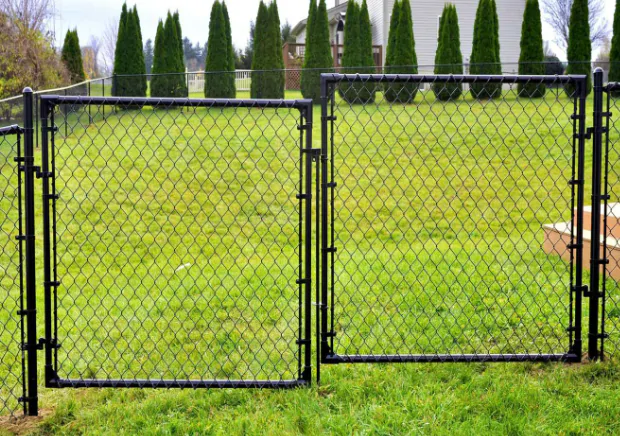
Fencing and enclosure systems
Agricultural applications of wire mesh fencing and enclosures include creating livestock enclosures for animals. It can build barriers between pastures or fields and keep out predators, such as wild animals, from crops and livestock. It can secure storage areas for hay, grain, and other feed.
Animal confinement and protection
Wire mesh is used in animal confinement and protection to provide a secure area for animals while allowing them to move freely. It can be used to create fencing, cages, and enclosures that are both durable and secure. Wire mesh is also useful for keeping animals away from unwanted areas, such as gardens and fields.
Crop protection and support systems
Animals and vermin can be kept out with the help of wire mesh, which can also support plants. To stop insects and other pests from entering a crop, for instance, a physical barrier can be built around it. As a strong foundation for them to grow on, it can also be utilized to support the weight of fruit and vegetables.
Pest control applications
Wire mesh can be applied as a physical barrier around windows and doors to keep out insects and rodents. It can also be placed over vents and other openings in walls and roofs to keep out larger animals and birds. Wire mesh can be used to cover crops in greenhouses to protect them from insects and other pests.
Irrigation and drainage systems
Wire mesh can be used as a filter to prevent debris and other contaminants from entering the irrigation system. It can also be used as a support structure for irrigation pipes, allowing them to be suspended in the ground and protected from damage.
3. Architectural Applications of Wire Mesh
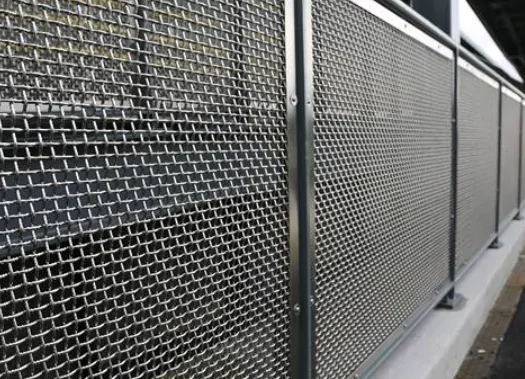
Building facades and cladding systems
Wire mesh is lightweight and strong and can be used to create a variety of patterns and designs. Wire mesh can be used to create decorative patterns, allowing for a variety of creative options for architects and designers. It is also highly durable, making it suitable for long-term installations for building facades and cladding systems.
Balustrades and handrails
Wire mesh balustrades and handrails are an effective and attractive form of fencing suitable for both residential and commercial use. These products are designed to provide both safety and security by preventing individuals from falling off balconies, decks, and other raised areas.
Decorative applications
Wire mesh is often used in decorative applications, such as sculptures, wall art, and signage. Wire mesh is also commonly used to create a variety of textures, patterns, and designs. It can be used to create intricate and intricate designs, as well as simple and clean lines.
Interior design elements
Wire mesh can be used to create attractive and chic room dividers, which can be used to divide up a large space or to provide visual separation between different areas. It can be used to create intricate wall art pieces, such as abstract shapes or large-scale murals.
Safety and security applications
Wire mesh is often employed in high-security locations such as prisons and military stations to secure important assets. A secure fence can be built using wire mesh around prisons, military sites, and other high-security facilities.
It is used for making security cages, enclosures, and dividers. It may also be used to provide a secure barrier between a public and restricted area, such as an airport security area.
4. Automotive Applications of Wire Mesh
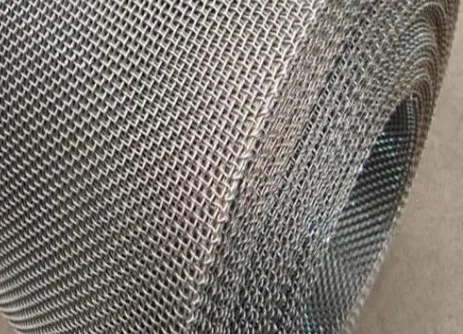
Engine and exhaust components
Wire mesh is commonly used in the construction of engine and exhaust components such as spark plugs, exhaust pipes, and headers. The mesh helps to keep small pieces of debris and dirt away from sensitive engine parts, reducing the risk of damage and clogging.
Air filtration and ventilation systems
Wire mesh is widely utilized in a variety of automobile air filtration and ventilation systems, such as air intake systems, exhaust systems, and intake manifold systems. The wire mesh serves as a filter, keeping dirt, dust, debris, and other impurities out of the engine and cabin.
Reinforcement and support structures
Wire mesh can be used to reinforce metal components, such as hoods, fenders, and side panels, to provide additional strength and rigidity. Wire mesh can also be used to create a support structure for plastic parts and components, such as bumpers and spoilers, to provide additional structural stability.
Grilles and mesh designs
Wire mesh is often used in the automotive industry for grilles and mesh designs. This type of mesh is often used to create decorative accents on the exterior of vehicles, such as grilles, body panels, and bumper covers.
5. Environmental Applications of Wire Mesh
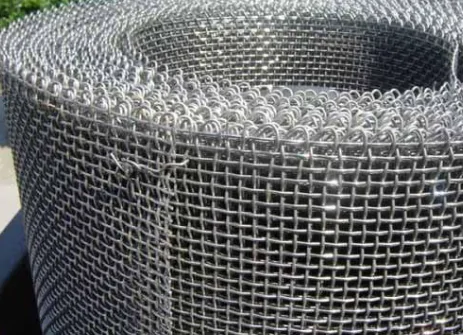
Erosion control and slope stabilization
For erosion control, wire mesh can be used to prevent soil erosion by trapping sediment and debris, reducing the velocity of runoff, and helping to stabilize the soil surface. Wire mesh can also be used to create a more gradual slope, which can help reduce the amount of erosion that takes place.
For slope stabilization, wire mesh can be used to create a “living wall” of vegetation, which will help to bind the soil together, reduce the amount of runoff, and provide additional stability to the slope. Wire mesh can also be used to reinforce geotextiles and other materials used in erosion control, further increasing its effectiveness.
Shoreline protection systems
Wire mesh can be installed along the shoreline in a variety of ways, depending on the site conditions. For example, it can be placed along the shoreline directly, or it can be placed in shallow water offshore and secured to the shoreline with anchors.
Aquaculture and fish farming systems
Wire mesh can be used to create cages and net pens for raising fish, to construct raceways and channels, to build filters and screens, and to create walls and dividers. Wire mesh is also used to control water flow rates and to separate fish species in the same system.
Filtration and drainage systems
Before runoff reaches local aquatic bodies, wire mesh can be employed in stormwater systems to filter away the trash, silt, and other contaminants. It may also be utilized in septic systems to prevent obstructions and enhance wastewater circulation.
Water treatment systems
Wire mesh is commonly used in water treatment systems to filter out larger particulates from water. It is typically placed in the inlet of a water treatment system to remove debris and other particles that could potentially clog the system or interfere with the treatment process. It can also be used to contain and filter out particulates in settling basins and other larger water bodies.
Conclusion
Wire mesh is a versatile material that can be used in a variety of applications. It is commonly used in filtration, sieving, security, ventilation, and insulation. Its strength and durability make it a great choice for many projects, and its corrosion resistance makes it a reliable choice for many years to come.

